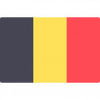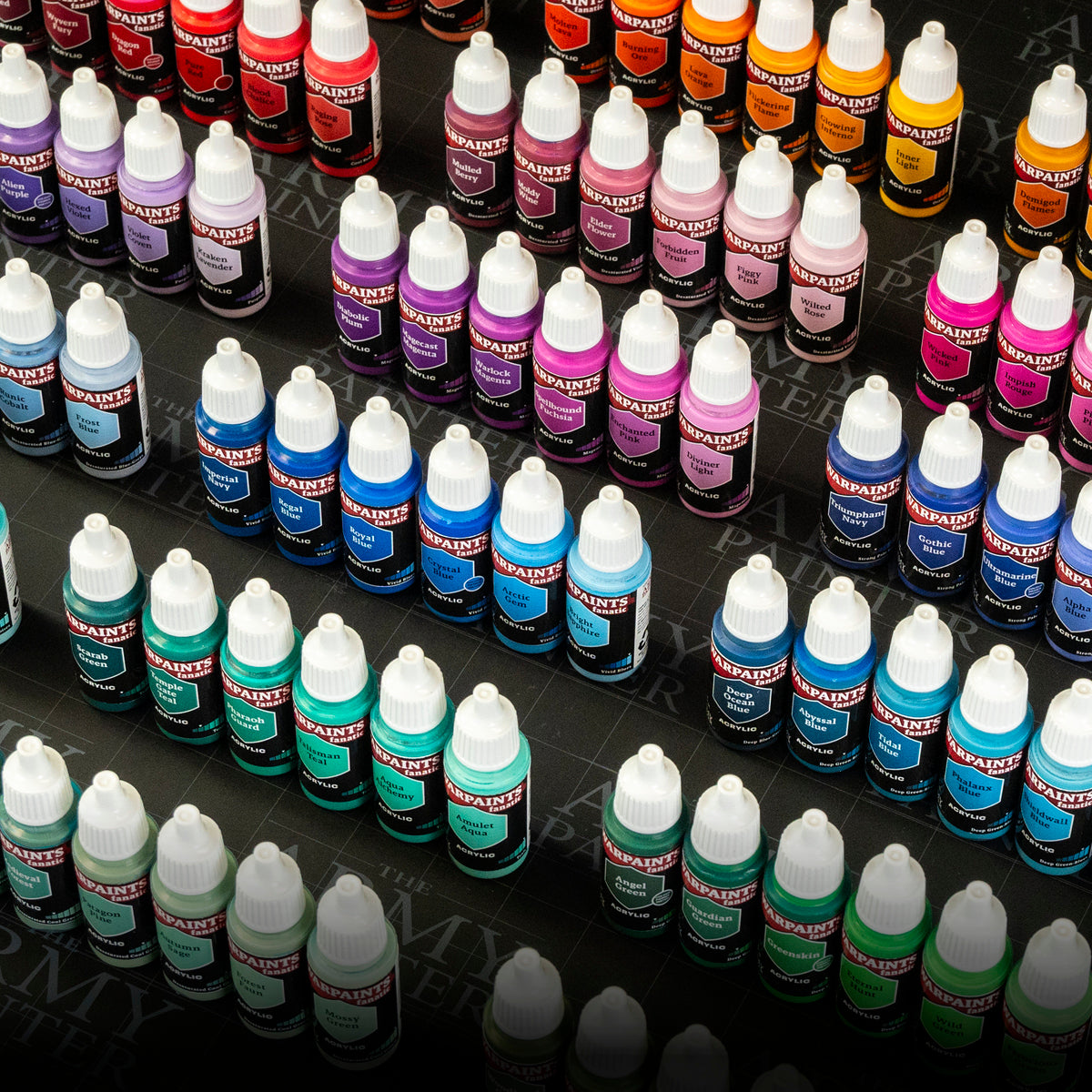






Flexible Triad: Olive Greens
- 6 x 18ml Warpaints Fanatic acrylic paint
- Paint military and historical miniatures and forested terrain and scenery
- Makes colour choice easy
- Flexible Colour Triad with six colours ranging from deep and dark, to bright and light

Flexible Triad: Olive Greens
Sale price€21,00
Regular price (/)
PRODUCT INFO
HOW TO USE
SAFETY
SHIPPING
Free shipping over $100 / €100!
 UNITED STATES
From: 17,99 €
UNITED STATES
From: 17,99 €
 UNITED KINGDOM
From: 8,99 €
UNITED KINGDOM
From: 8,99 €
 FRANCE
From: 4,99 €
FRANCE
From: 4,99 €
 GERMANY
From: 5,99 €
GERMANY
From: 5,99 €
 ITALY
From: 8,99 €
ITALY
From: 8,99 €
 NETHERLANDS
From: 4,99 €
NETHERLANDS
From: 4,99 €
 BELGIUM
From: 4,99 €
BELGIUM
From: 4,99 €
 DENMARK
From: 4,99 €
DENMARK
From: 4,99 €
 IRELAND
From: 8,99 €
IRELAND
From: 8,99 €
 SPAIN
From: 8,99 €
SPAIN
From: 8,99 €
 SWEDEN
From: 6,99 €
SWEDEN
From: 6,99 €
 AUSTRIA
From: 7,99 €
AUSTRIA
From: 7,99 €
 FINLAND
From: 8,99 €
FINLAND
From: 8,99 €
 PORTUGAL
From: 8,99 €
PORTUGAL
From: 8,99 €
 POLAND
From: 7,99 €
POLAND
From: 7,99 €
 CZECH REPUBLIC
From: 7,99 €
CZECH REPUBLIC
From: 7,99 €
 CROATIA
From: 12,99 €
CROATIA
From: 12,99 €
 HUNGARY
From: 11,99 €
HUNGARY
From: 11,99 €
 SLOVENIA
From: 11,99 €
SLOVENIA
From: 11,99 €
 LUXEMBOURG
From: 4,99 €
LUXEMBOURG
From: 4,99 €
 GREECE
From: 15,99 €
GREECE
From: 15,99 €
 ROMANIA
From: 10,99 €
ROMANIA
From: 10,99 €
 LATVIA
From: 11,99 €
LATVIA
From: 11,99 €
 BULGARIA
From: 12,99 €
BULGARIA
From: 12,99 €
 LITHUANIA
From: 10,99 €
LITHUANIA
From: 10,99 €
 ESTONIA
From: 10,99 €
ESTONIA
From: 10,99 €
 SLOVAKIA
From: 10,99 €
SLOVAKIA
From: 10,99 €
Free shipping over $100 / €100!
 UNITED STATES
From: 17,99 €
UNITED STATES
From: 17,99 €
 UNITED KINGDOM
From: 8,99 €
UNITED KINGDOM
From: 8,99 €
 FRANCE
From: 4,99 €
FRANCE
From: 4,99 €
 GERMANY
From: 5,99 €
GERMANY
From: 5,99 €
 ITALY
From: 8,99 €
ITALY
From: 8,99 €
 NETHERLANDS
From: 4,99 €
NETHERLANDS
From: 4,99 €
 BELGIUM
From: 4,99 €
BELGIUM
From: 4,99 €
 DENMARK
From: 4,99 €
DENMARK
From: 4,99 €
 IRELAND
From: 8,99 €
IRELAND
From: 8,99 €
 SPAIN
From: 8,99 €
SPAIN
From: 8,99 €
 SWEDEN
From: 6,99 €
SWEDEN
From: 6,99 €
 AUSTRIA
From: 7,99 €
AUSTRIA
From: 7,99 €
 FINLAND
From: 8,99 €
FINLAND
From: 8,99 €
 PORTUGAL
From: 8,99 €
PORTUGAL
From: 8,99 €
 POLAND
From: 7,99 €
POLAND
From: 7,99 €
 CZECH REPUBLIC
From: 7,99 €
CZECH REPUBLIC
From: 7,99 €
 CROATIA
From: 12,99 €
CROATIA
From: 12,99 €
 HUNGARY
From: 11,99 €
HUNGARY
From: 11,99 €
 SLOVENIA
From: 11,99 €
SLOVENIA
From: 11,99 €
 LUXEMBOURG
From: 4,99 €
LUXEMBOURG
From: 4,99 €
 GREECE
From: 15,99 €
GREECE
From: 15,99 €
 ROMANIA
From: 10,99 €
ROMANIA
From: 10,99 €
 LATVIA
From: 11,99 €
LATVIA
From: 11,99 €
 BULGARIA
From: 12,99 €
BULGARIA
From: 12,99 €
 LITHUANIA
From: 10,99 €
LITHUANIA
From: 10,99 €
 ESTONIA
From: 10,99 €
ESTONIA
From: 10,99 €
 SLOVAKIA
From: 10,99 €
SLOVAKIA
From: 10,99 €



